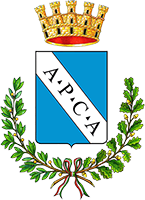EX-AGRICULTURAL CONSORTIUM

EX-AGRICULTURAL CONSORTIUM
In 2001, between Via 1° Maggio and Via Rimembranze, just outside Porta Romana, during the demolition of the Ex Agricultural Consortium, a vast necropolis was brought to light. Extensive archaeological research took place in an area of 184 sq.m. and 52 graves of various types emerged. The stratigraphy and kits’ analysis established that the oldest tombs date back to the late fourth century B.C. and that the site continued to be used until the second century A.D. This very important discovery testifies an age of transition between Hellenism and Romanization, which allows us to consider closely the changes that occurred with the arrival of Rome and the rise of new burial styles suited to new social realities. The tipping tombs returned the richest finds, belonging to members of the local elite. The caissons were comprised of a rectangular pit covered with large and thick slabs of local limestone, where up to seven individuals could be buried. Blocks of the same stone covered the pit on the outside, arranged in three superimposed rows, to form a sort of tombstone which indicated the presence of burial grounds.
The tipping tombs were flanked by graves devoid of coating, often dug close to the walls of the caissons. Later, small monolithic sarcophagi appeared, cut from a single block of silt travertine and dug with the cover plate. The Roman era brought new transformations: the old depositions were plundered, chests and sarcophagi were reused, beside or inside of which urns were laid. The skeletal remains found in the caissons and sarcophagi attest that these ancient people of Umbria practiced the rites of burial and incineration: in the tombs, next to the remains of the deceased, the burned bones of individuals cremated were mixed with objects, such as vases for cosmetics still containing objects for body care and residues of paint, plaster ointment of unusual shapes, ointment in alabaster from Egypt, tableware, and vases for libations. Tomb 52 has provided some of the richest findings: bronze vases, mirrors, ivory, jewellery, weapons. These objects were status symbols, both indicating the individual’s membership in a family of high rank in addition and revealing the social stratification and economic level reached by the “Amerina” community after the changes occurred in central Italy between the Hellenistic era and the advance of Romanization. The faunal remains unearthed increase the attractiveness that the necropolis exercises, due to the slice of daily life that they offer. Bones of cattle, pigs, sheep, as well as chickens, ducks, horses and rare game, residues of offers consumed at the funeral banquet, testifies, aside from the trade, the vitality of the economic activities of subsistence, the wealth of the fauna of the area, of ancient agricultural, pastoral and hunting vocation, as well as its big production of lumber, in a landscape characterized by the abundance of forests.
In addition, a dog with a bronze bell around its neck, buried next to a child, was found perfectly preserved. It is now visible in a glass case on the ground floor of the Museum, next to the other rich materials belonging to the tombs’ kits of the necropolis.


